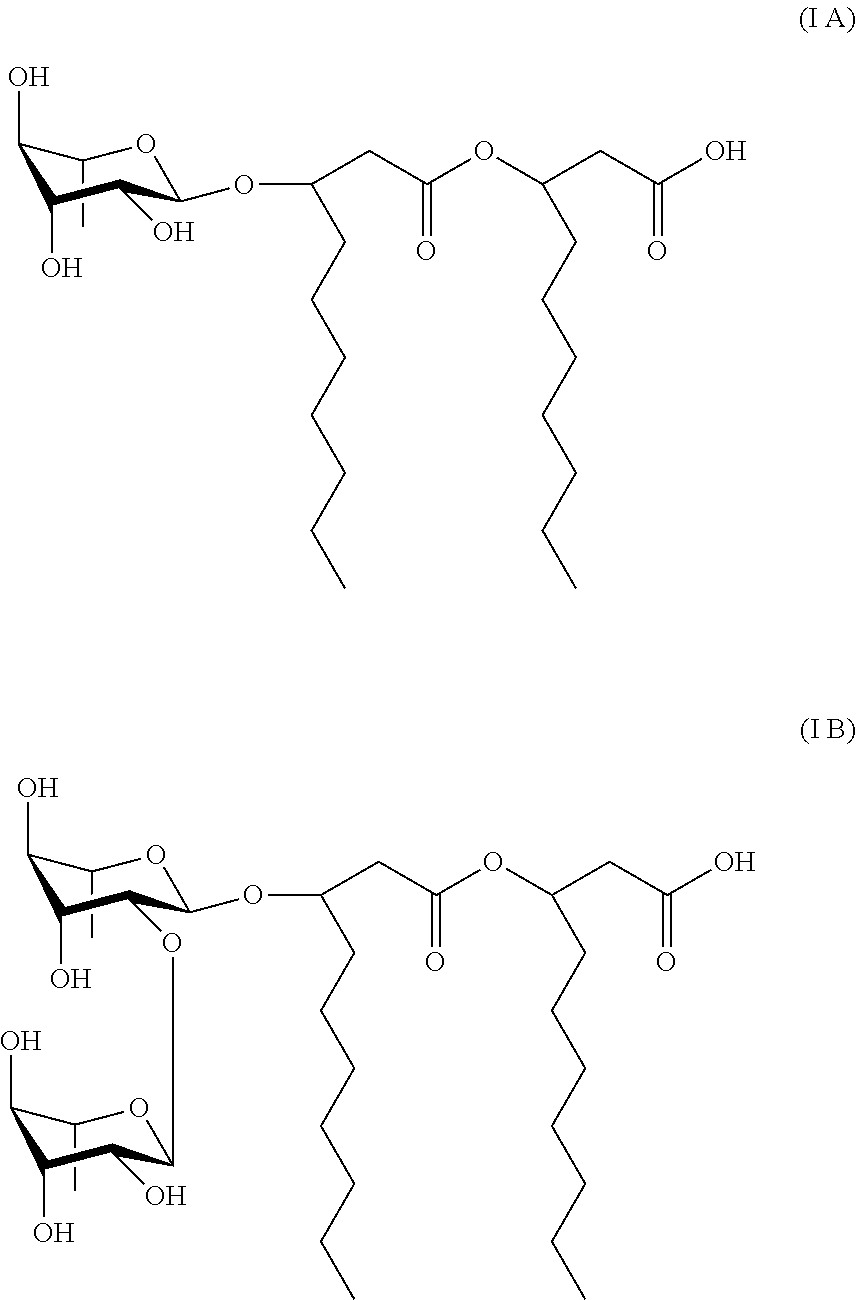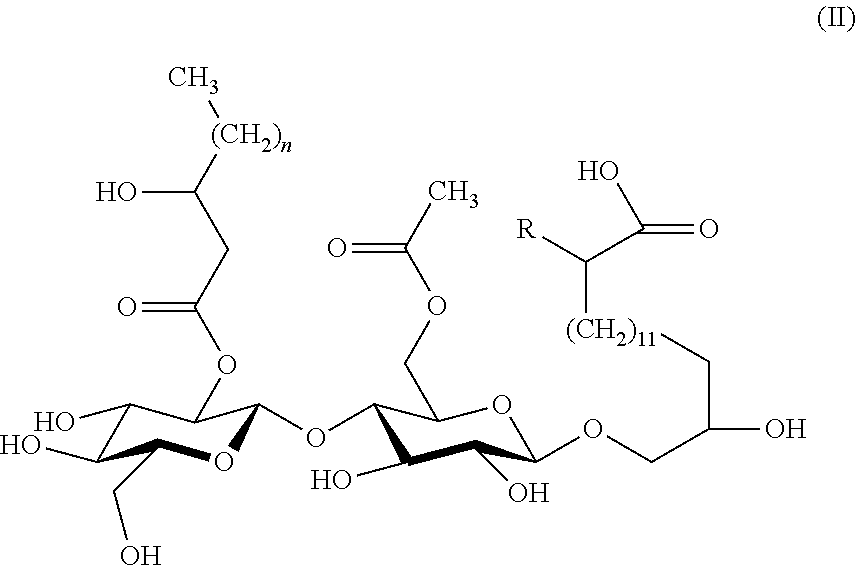Method of using biosurfactants as acid corrosion inhibitors in well treatment operations
- Summary
- Abstract
- Description
- Claims
- Application Information
AI Technical Summary
Benefits of technology
Problems solved by technology
Method used
Image
Examples
examples
[0044]Corrosion tests were performed at 175° F., 200° F. and 225° F. on two different types of steel, carbon steel (N-80) and 13% chromium steel (Cr-13). The acidic fluids tested were acetic acid, formic acid and HCl with KI. The results of the corrosion tests are shown in Tables I-V. In each of the tests the acid solution was applied to the two different types of steel for six hours. The comparison runs did not use corrosion inhibitor or KI. A rhamnolipid and a non-ionic surfactant were tested with different acid systems (10% acetic acid, 10% formic acid, and 5-10% HCl) at 175° F.-200° F. for their efficacy as green acid corrosion inhibitors. Synergistic contributions between two biosurfactants and biosurfactants with conventional corrosion inhibitors were also tested. The targeted corrosion rate is was ≦0.05 lb / sq ft.
[0045]As used below, the following abbreviations have been used:
[0046]CI-31, CI-111, CI-27: conventional corrosion inhibitors which are not environmentally friendly. ...
PUM
| Property | Measurement | Unit |
|---|---|---|
| Atomic weight | aaaaa | aaaaa |
| Molecular weight | aaaaa | aaaaa |
Abstract
Description
Claims
Application Information
 Login to View More
Login to View More - R&D Engineer
- R&D Manager
- IP Professional
- Industry Leading Data Capabilities
- Powerful AI technology
- Patent DNA Extraction
Browse by: Latest US Patents, China's latest patents, Technical Efficacy Thesaurus, Application Domain, Technology Topic, Popular Technical Reports.
© 2024 PatSnap. All rights reserved.Legal|Privacy policy|Modern Slavery Act Transparency Statement|Sitemap|About US| Contact US: help@patsnap.com










